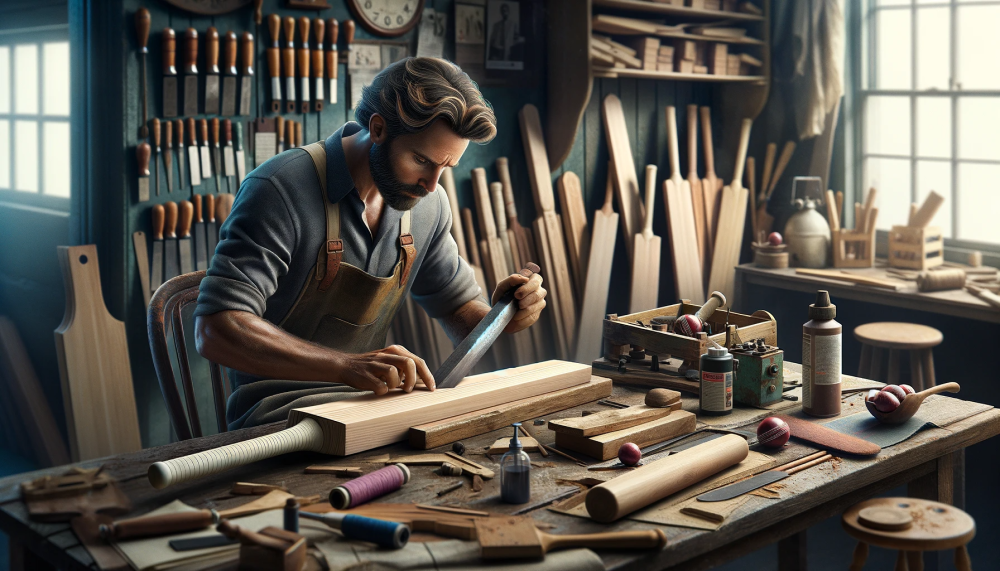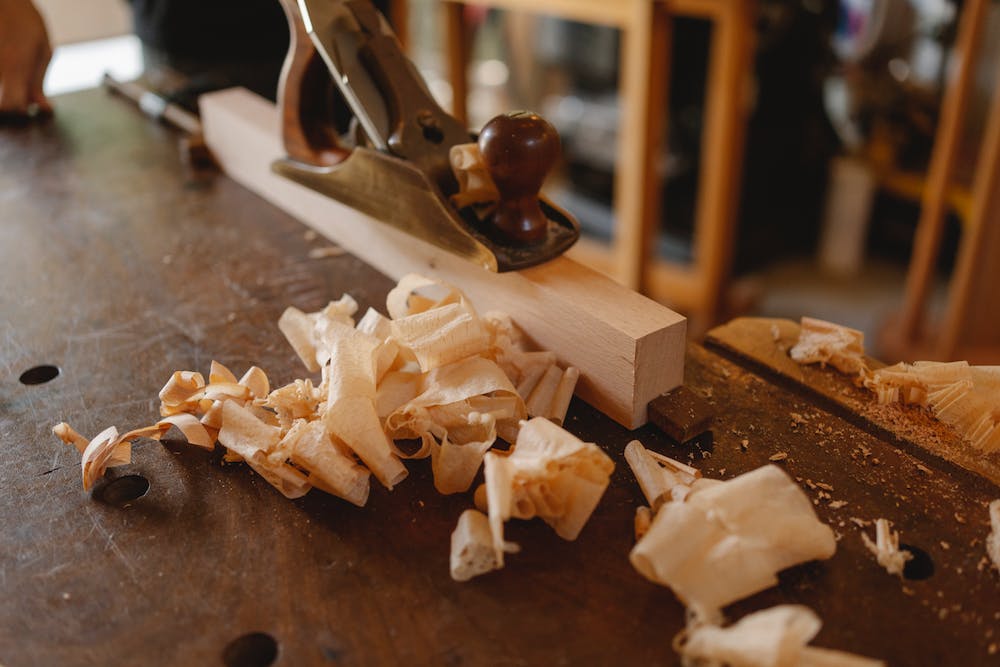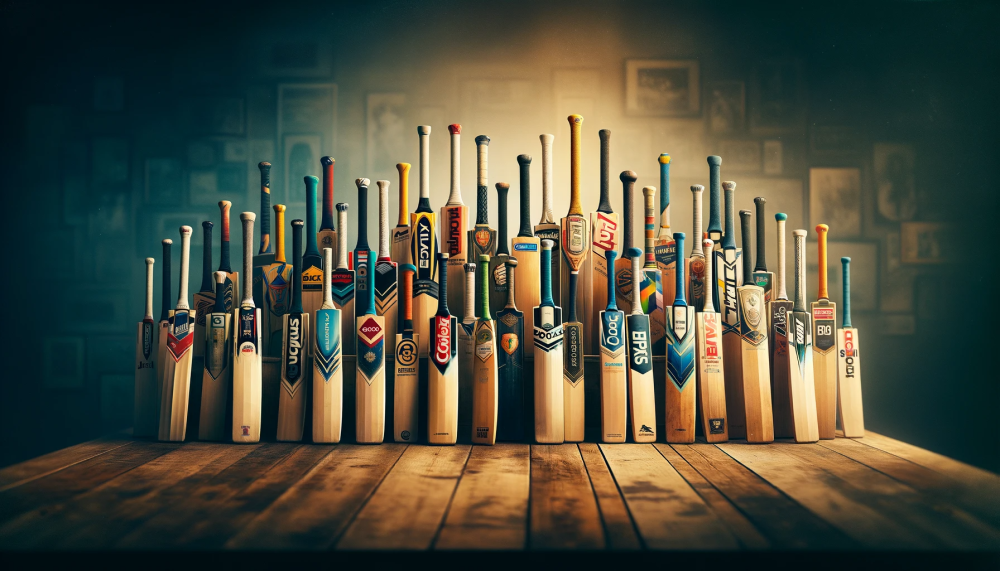
How Are Cricket Bats Made
Cricket bats are a crucial piece of equipment for the game of cricket, and they undergo a meticulous process of creation. The materials used, mainly willow wood and handle materials, play a significant role in the bat’s performance. Understanding how cricket bats are made can enhance your appreciation for this essential sporting tool.
Willow wood is the primary material used in making cricket bats. It is carefully selected for its unique properties, including a combination of strength, lightness, and flexibility. The wood is typically sourced from English willow or Kashmir willow trees.
The process of making a cricket bat involves several steps. It starts with selecting the appropriate willow, considering factors such as grain structure and density. The selected willow is then carefully prepared by removing excess bark and shaping it into the desired bat profile. The handle, usually made of cane or composite materials, is fitted onto the bat and securely attached.
Once the basic shape is achieved, the bat goes through sanding and polishing to create a smooth finish. A toe guard may be applied to protect the bottom of the bat from damage.
There are different types of cricket bats available, each with its own characteristics. English willow bats are known for their high-quality performance, while Kashmir willow bats offer a more affordable option. Hybrid bats, combining features of both types, cater to different playing styles and preferences.
Taking care of a cricket bat is essential for its longevity and optimal performance. Knocking-in, a process that involves striking the bat with a mallet, helps compress the fibers and reduce the risk of damage. Oil treatment is applied to maintain moisture balance and protect the wood. Proper storage, away from extreme temperature and humidity, ensures the bat’s durability.
Understanding the craftsmanship and care that goes into making and maintaining a cricket bat can enhance your game and appreciation for this beloved sport.
What Materials Are Used to Make Cricket Bats?

Curious about how cricket bats are made? Let’s dive into the fascinating world of cricket bat fabrication. Discover the key materials used in crafting these sporting essentials: the renowned willow wood and the essential components of cricket bat handles.
Get ready to explore the intricate details and learn interesting tidbits about the materials that shape the performance and success of cricket bats.
Willow Wood
Willow wood is the primary material used to make cricket bats. It is chosen for its unique combination of strength and flexibility.
The process of crafting a cricket bat from willow wood involves multiple steps, such as carefully selecting the appropriate piece of wood, removing excess moisture, shaping it into the desired bat shape, fitting the handle, sanding and polishing it, and finally applying a toe guard for added protection.
There are various types of willow wood utilized in the production of cricket bats, including the superior English Willow and the more affordable Kashmir Willow.
It is crucial to provide proper care to maintain the longevity and performance of a cricket bat, including knocking-in and regular oil treatment.
Handle Materials
The handle materials used in cricket bats are crucial for providing stability, flexibility, and comfort to the player. Different materials offer varying degrees of performance and durability.
- Kashmir Willow: Cost-effective and durable option for amateur players.
- English Willow: Considered the best material for professional bats due to its exceptional performance and responsiveness.
- Cane: Used as a binding material in the handle to provide flexibility and shock absorption.
- Fiberglass: Offers added strength to the handle, enhancing durability.
- Sarawak Cane: A lightweight and flexible material used in premium bats.
The Process of Making a Cricket Bat

Crafting a cricket bat involves a fascinating journey from selecting the perfect willow to applying the final touches. Buckle up as we explore each stage of the process, from preparing the willow to shaping the bat and fitting the handle.
We’ll dive into the artistry and precision required to create a bat that meets the high standards of cricketers worldwide. Get ready to discover the secrets behind the craftsmanship of cricket bats!
Selecting the Willow
Choosing the appropriate willow is essential when it comes to finding a cricket bat that performs optimally. Here are some crucial factors to take into account:
- Grains: It is important to look for straight and even grains on the blade, as they indicate high-quality wood.
- Density: Opting for a dense willow is recommended, as it offers increased power and durability.
- Weight: The weight you select should align with your playing style and personal preference. Heavier bats deliver more power, whereas lighter ones provide superior control.
- Balance: Ensuring that the bat feels balanced in your hands and offers good pick-up is crucial.
- Ping: It is advisable to assess the bat by tapping it with a ball. A higher-pitched sound indicates excellent rebound and performance.
- Natural Imperfections: Take into consideration minor blemishes or knots on the bat’s face, as they can impact its durability.
Preparing the Willow
Preparing the willow for crafting a cricket bat involves a series of essential steps:
- Soaking the willow clefts: To make the willow clefts more pliable, they are submerged in water for several hours.
- Drying the willow clefts: After the soaking process, the clefts are allowed to naturally dry, preventing any warping or splitting of the wood.
- Removing excess sapwood: A drawknife is skillfully used to carefully remove the outer layer of the willow, known as sapwood, thereby revealing the stronger heartwood beneath.
- Cutting and shaping: The clefts are then skillfully cut and shaped into the desired dimensions for the cricket bat, gradually creating the blade, handle, and shoulders.
- Pressing and toning: The shaped bat undergoes a process of pressing to enhance both its performance and durability. Additionally, it is meticulously toned to improve its visual appeal.
Fact: The preparation of the willow plays a crucial role in determining both the performance and lifespan of a cricket bat.
Shaping the Bat
A crucial step in the process of making a cricket bat is to shape it. Here are the steps involved:
- Marking: The craftsman marks the desired shape and dimensions on the bat blank.
- Cutting: Using specialized tools, the excess wood is carefully removed to create the basic shape of the bat.
- Sanding: To ensure a smooth and refined shape, the bat is sanded to eliminate any rough edges.
- Curving: The craftsman applies heat and pressure to give the face of the bat the desired shape, contributing to its performance.
- Refining: Prior to completion, a thorough inspection is conducted on the bat, and any necessary final adjustments are made to achieve the perfect shape and balance.
Fun Fact: Over time, the shape of cricket bats has undergone significant evolution. Modern bats are designed with a broader middle and thicker edges, enhancing power and performance.
Fitting the Handle
Fitting the handle of a cricket bat is an integral part of the manufacturing process. Here are the sequential steps involved:
- Selecting the handle material, typically made of cane or composite materials.
- Eliminating any excess wood from the top of the handle to create a level surface.
- Applying adhesive to the handle and carefully positioning it into the prepared socket on the blade.
- Safely securing the handle firmly in place and allowing the adhesive to dry.
- Shaping the handle to fit comfortably in the hands of the batsman.
- Performing sanding and polishing on the handle for a sleek finish.
Ensuring a proper fitting of the handle guarantees a comfortable grip and enhances the overall performance of the cricket bat.
Sanding and Polishing
After shaping the cricket bat, the next step is sanding and polishing. This process involves smoothing the surface of the bat to ensure a clean finish. First, coarse sandpaper is used to remove any rough edges or imperfections. Then, finer sandpaper is used to create a smooth and even surface. Once the sanding and polishing are complete, the bat is polished using a soft cloth and polishing compound. This gives the bat a glossy finish and enhances its appearance.
For optimal performance and durability, it is important to properly sand and polish a cricket bat.
It is recommended to seek professional assistance or follow manufacturer guidelines when performing this task.
Regular maintenance, including sanding and polishing, can help prolong the lifespan of the bat and maintain its quality.
Applying the Toe Guard
Applying the toe guard is a crucial step in the process of making a cricket bat. It plays a vital role in safeguarding the bottom of the bat, thereby enhancing its durability. Here is a comprehensive step-by-step guide on how to properly apply the toe guard:
- Clean the surface: Before applying the toe guard, it is essential to ensure that the bottom of the bat is thoroughly cleaned and free from any dirt or debris.
- Measure and cut: Take the toe guard material and measure it against the length of the bat’s bottom. Cut it to the appropriate size according to the measurements.
- Apply adhesive: Apply a strong adhesive evenly on the surface of the bat’s bottom, ensuring complete coverage.
- Attach the toe guard: With utmost care, place the toe guard on the glued surface, ensuring proper alignment with the edges of the bat.
- Press and secure: To create a robust bond, firmly press down on the toe guard. To hold it securely in position while the adhesive dries, you can utilize clamps or tape.
- Smooth out any air bubbles: Thoroughly inspect for the presence of air bubbles beneath the toe guard. If necessary, eliminate them by smoothing the surface.
- Trim and finish: Once the adhesive is fully dried, carefully trim off any excess toe guard material, resulting in a clean and neat finish.
Types of Cricket Bats

Cricket bats, a vital tool in the game, come in various types that cater to different player preferences and playing conditions.
In this section, we’ll explore the diverse world of cricket bats, including the popular English Willow bats known for their performance, Kashmir Willow bats favored for their affordability, and the innovative Hybrid bats that combine the best qualities of both types.
Get ready to discover the nuances and benefits of each cricket bat variant, enabling you to make an informed choice for your game.
English Willow Bats
English Willow Bats are highly sought after by professional cricket players due to their superior quality and performance.
- Material: English Willow
- Grains: 6-12 grains per bat
- Weight: 2lb 7oz – 2lb 12oz
- Balance: Mid to Low
- Performance: Offers excellent power and strokeplay
- Durability: Relatively softer, requires proper maintenance
- Price Range: $200 – $1000+
English Willow Bats are made from the wood of Salix Alba tree, known for its lightweight and fibrous characteristics. The bats are handcrafted using traditional techniques, including selecting the best willow, shaping the bat, fitting the handle, sanding, polishing, and applying a toe guard.
The finished product provides remarkable power, control, and precision, making it the preferred choice for professional cricketers.
Kashmir Willow Bats
Kashmir Willow Bats are a popular choice among cricketers due to their affordability and durability. Here are some key points to consider about Kashmir Willow Bats:
- Affordability: Kashmir Willow Bats are generally more affordable compared to English Willow bats, making them a popular choice for beginners and casual players.
- Durability: Kashmir Willow Bats are known for their durability, which makes them suitable for hard-hitting shots and rough playing conditions.
- Weight: Kashmir Willow Bats tend to be slightly heavier than English Willow bats, offering more power and stability.
- Performance: While Kashmir Willow Bats may not have the same level of performance as English Willow bats, they still offer good stroke play and decent power.
- Care and Maintenance: Proper care and maintenance, such as oiling and protecting the bat from moisture, are crucial to prolonging the lifespan of Kashmir Willow Bats.
Hybrid Bats
Hybrid bats are cricket bats that are made using a combination of different materials. These bats typically have a wooden blade made from either English willow or Kashmir willow.
The handle of a hybrid bat is usually made from composite materials like carbon fiber or fiberglass. The use of composite materials in the handle allows for better shock absorption and increased power transfer.
Hybrid bats are known for their durability and performance, making them a popular choice among professional cricketers.
They offer the best of both worlds, combining the traditional feel of a wooden blade with the technological advancements in handle design.
Some popular brands that manufacture hybrid bats include Gray-Nicolls, Kookaburra, and GM.
Taking Care of a Cricket Bat

Taking care of your cricket bat is crucial for its longevity and performance. In this section, we’ll explore the essential steps to maintain your prized equipment. From knocking-in to oil treatment and proper storage, we’ll unlock the secrets to keep your cricket bat in top shape.
So, get ready to discover the key practices that will ensure your bat remains a formidable weapon on the pitch.
Knocking-In
Knocking-in is a crucial process in preparing a cricket bat for optimum performance and durability.
- Using a wooden mallet or a specially designed bat mallet, gently tap the surface of the bat all over to compress the fibers.
- Focus on the edges and toe of the bat, as these areas are particularly susceptible to damage.
- Gradually increase the force of the mallet over several sessions to ensure even compression during the knocking-in.
- Apply a thin layer of linseed oil to the face and edges of the bat, allowing it to soak in overnight.
- Repeat the knocking-in process after applying the linseed oil to further enhance the bat’s performance.
Remember, the gradual knocking-in of the bat is crucial to prevent damage. It greatly improves the bat’s resilience and minimizes the risk of cracks. Taking the time to properly knock-in your cricket bat will ensure its longevity and optimize your playing experience.
Oil Treatment
- To properly care for a cricket bat, one crucial step is the oil treatment. This process aids in maintaining the durability and performance of the bat.
- Initiate the oil treatment by applying a light coat of linseed oil to the face, edges, and toe of the bat.
- Allow the oil to permeate the wood for a minimum of 24 hours.
- Repeat this procedure two to three times, ensuring the oil is fully dried between coats.
- Following the final coat, delicately sand the bat to smoothen any uneven surfaces.
- For further enhancement of the bat’s longevity, apply a protective layer of cricket bat wax.
Fact: The oil treatment not only nourishes the wood but also safeguards the bat from moisture absorption, thus preventing damage during play.
Proper Storage
Properly store your cricket bat to maintain its performance and longevity. Follow these steps:
- Ensure the bat is kept in a dry and cool environment to prevent moisture damage.
- Avoid exposing the bat to extreme temperatures or direct sunlight as it can cause warping and cracking.
- To protect it from dust and scratches, store the bat in a bat cover or a specially designed bat case.
- When storing, keep the bat horizontally or vertically to avoid applying pressure on the face or edges.
- Regularly inspect the bat for any signs of damage or wear and promptly attend to them.
Frequently Asked Questions
How are cricket bats made from willow wood?
Cricket bats are made from willow wood sourced from the English willow tree, specifically the Salix alba var. caerulea variety. The best cuts of willow wood, known as clefts, are selected and air-dried for up to a year to remove moisture. These clefts are then graded based on their quality, with Grade 1+ being the highest and Grade 3 being the lowest. The wood is then shaped, pressed, and refined to create the final cricket bat.
What is the pressing process in cricket bat manufacturing?
The pressing process in cricket bat manufacturing involves using a heavy rolling machine to shape the bat and compress the wood’s fibers. This process gives the bat its structural integrity and also curves the blade. It helps improve the quality and consistency of the bat by ensuring that the wood is evenly compressed and shaped.
What materials are used to make the handle of a cricket bat?
The handle of a cricket bat is made from a combination of cane and rubber strips. This composition provides rigidity and elasticity, protecting the player’s wrists and forearms while also offering a comfortable grip. The top of the blade is spliced into a deep ‘V’ shape to accommodate the handle.
Are there regulations regarding the dimensions of cricket bats?
Yes, the Laws of Cricket state certain regulations regarding the dimensions of cricket bats. The bat must not exceed 96.5cm in length, 10.8cm in width, or have an overall depth greater than 6.7cm. The edge of the bat must not exceed 4cm. These regulations ensure fair play and uphold the balance between bat and ball in the sport of cricket.
How has the manufacturing process of cricket bats evolved over time?
The manufacturing process of cricket bats has evolved significantly over the years. While the general shape of the bat remains relatively unchanged, the use of machinery and specialized techniques has improved the quality and consistency of the final product. Skilled craftsmen now shape the raw pieces of wood using powerful machines, resulting in finely balanced bats. Modern additions like rubber grips and branded stickers have also been introduced.
Is there any variation in the types of willow used for cricket bats?
Cricket bats are primarily made from English willow, but there is also a variety grown in the Indian subcontinent, particularly in Kashmir. Bats made from this variety perform similarly to English willow bats. However, the English willow bats, especially those made from Grade 1 wood, are highly sought after for their spring-like capabilities, lightness, and durability.





